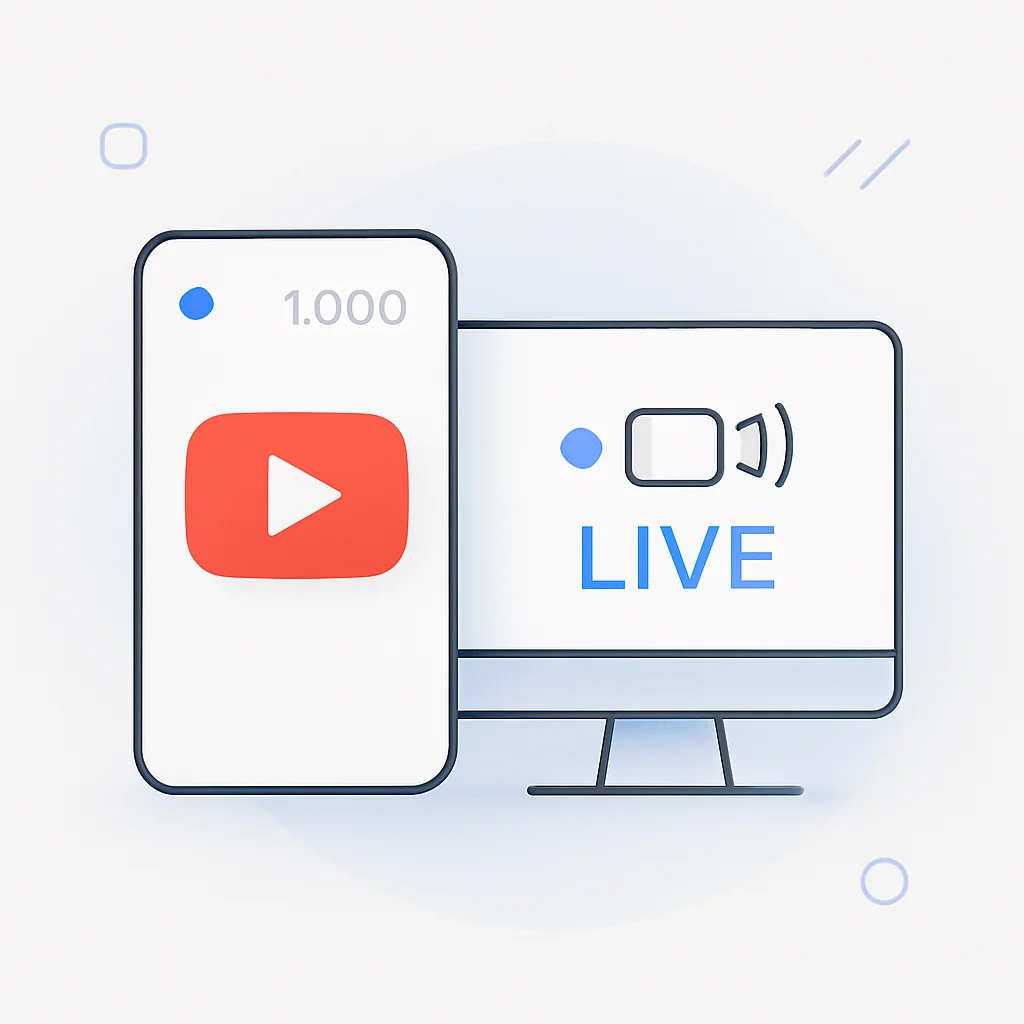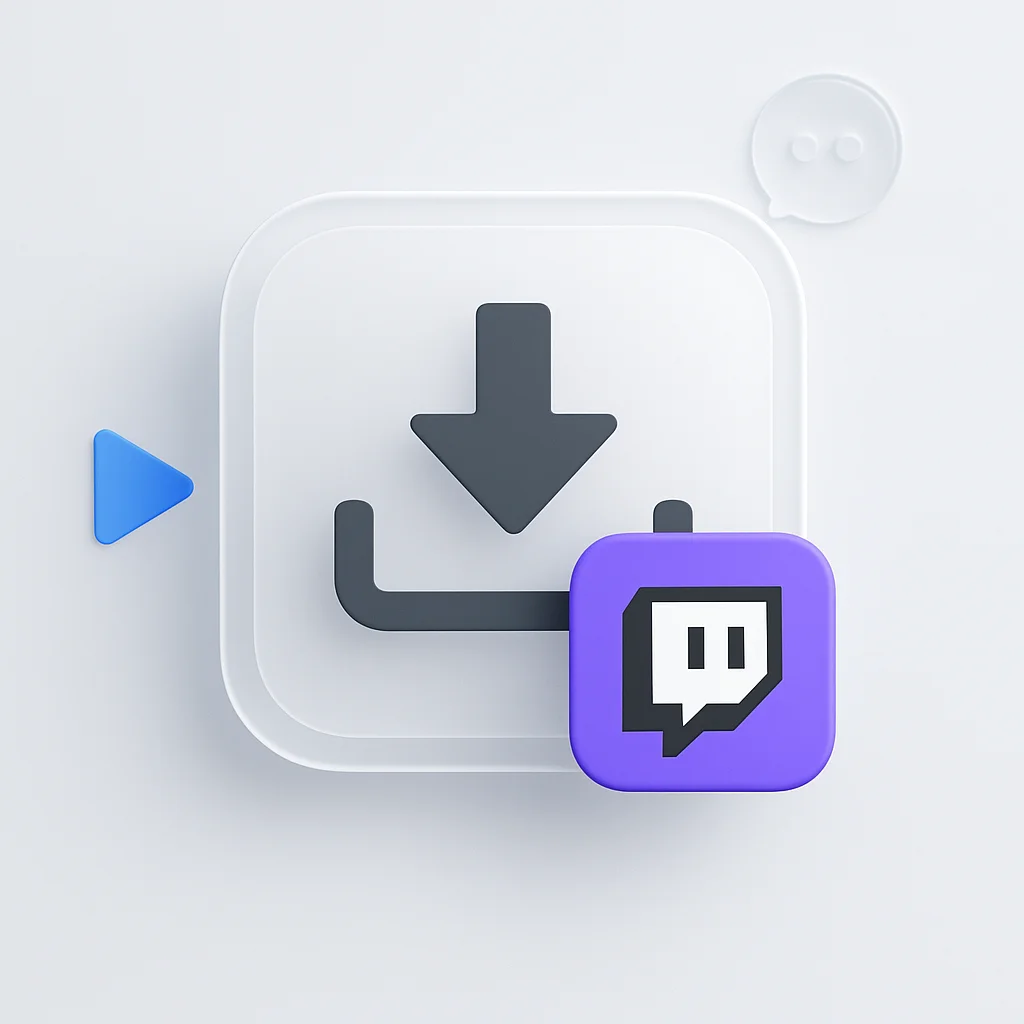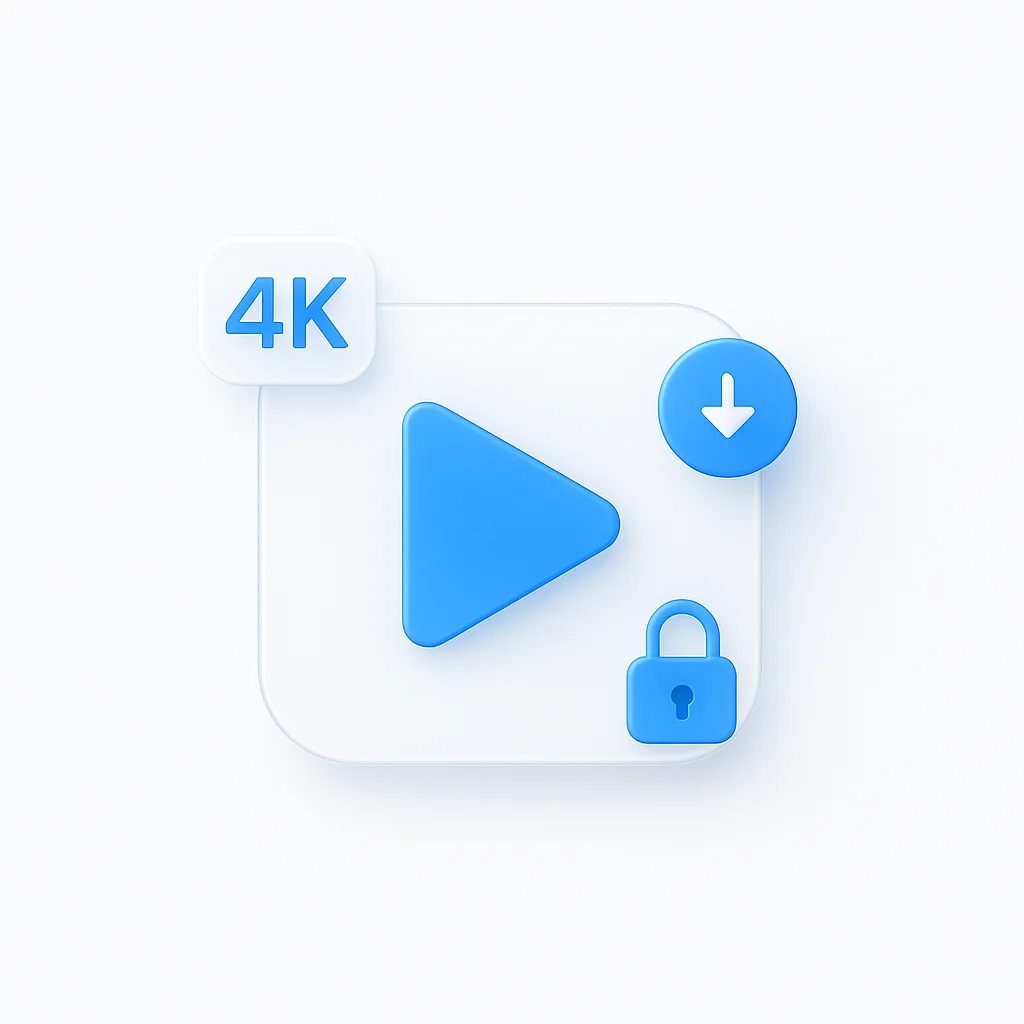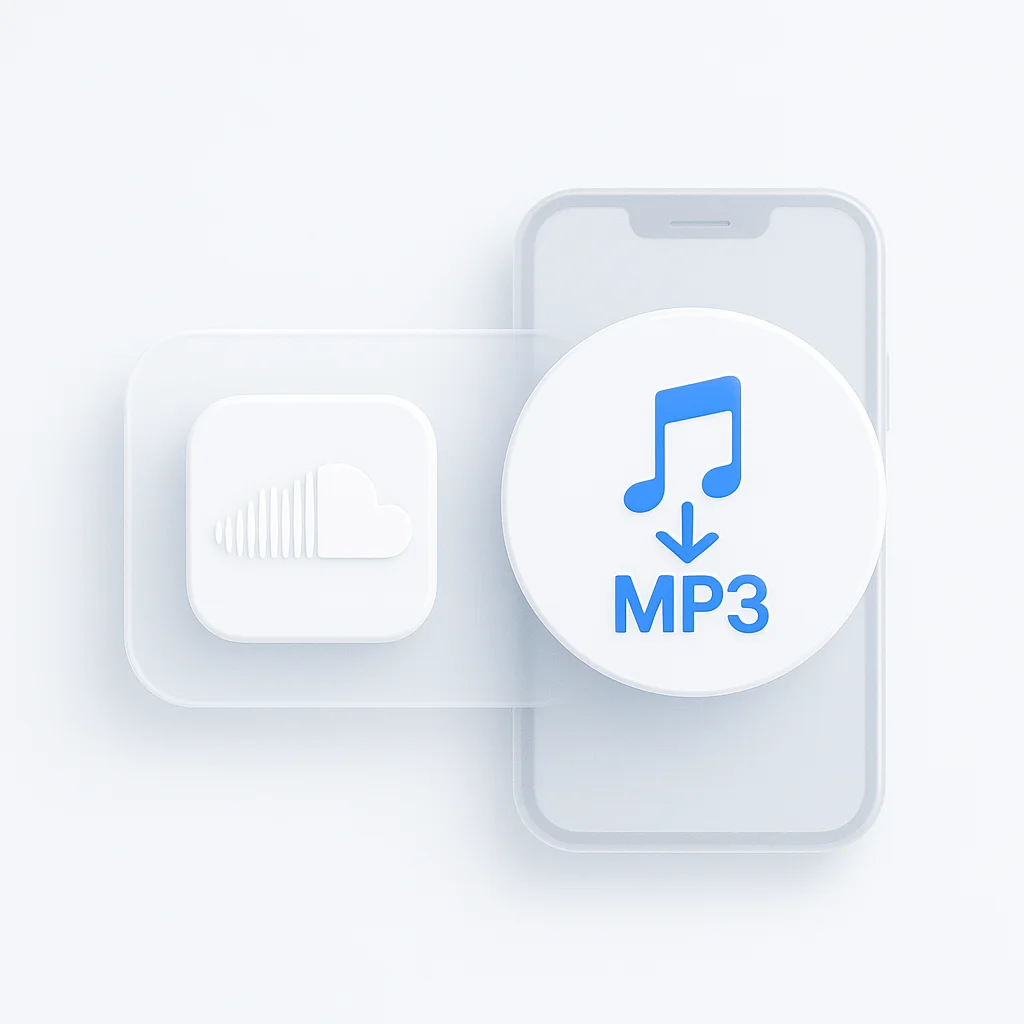¿Estás listo para llevar tu juego de YouTube al siguiente nivel? Despídete de los días de esperar esa esquiva marca de 1000 suscriptores para comenzar a transmitir en vivo. Tenemos la guía definitiva para ayudarte a transmitir en vivo en YouTube, sin importar cuántos suscriptores tengas. Así que toma tu cámara, abróchate el cinturón y prepárate para cautivar a tu audiencia como nunca antes. ¡Es hora de dejar tu huella en el mundo de la transmisión en vivo en YouTube!
Introducción
En el panorama digital en constante evolución, la transmisión en vivo se ha convertido en una herramienta poderosa tanto para los creadores de contenido como para las marcas. Permite la participación e interacción en tiempo real, construyendo un sentido de comunidad entre los espectadores. Este artículo tiene como objetivo proporcionar una guía paso a paso para transmitir en vivo en YouTube, incluso con menos de 1000 suscriptores. Profundizamos en los detalles del proceso, proporcionando ideas, consejos y estrategias para una transmisión en vivo exitosa.
Los conceptos básicos de la transmisión en vivo de YouTube
La transmisión en vivo de YouTube sirve como una plataforma donde los creadores pueden compartir contenido de video en tiempo real con su audiencia. Este medio interactivo va más allá de los confines de los videos pregrabados, ofreciendo una experiencia inmersiva que fomenta la conexión y el compromiso instantáneos.
La importancia de la transmisión en vivo radica en su potencial de interacción en tiempo real. Los espectadores pueden reaccionar, comentar y hacer preguntas, todo mientras la transmisión está ocurriendo. Esta comunicación bidireccional facilita una conexión más profunda entre el creador de contenido y la audiencia, haciendo que los espectadores se sientan parte de la experiencia. Además, la transmisión en vivo en YouTube puede aumentar tu visibilidad en la plataforma, gracias a los algoritmos de YouTube que tienden a favorecer el contenido en tiempo real. Ya seas un aspirante a influencer, una marca que busca expandir tu alcance o simplemente alguien con un mensaje para compartir, comprender los conceptos básicos de la transmisión en vivo de YouTube live es el primer paso hacia una transmisión exitosa.
Requisitos para la transmisión en vivo de YouTube
Antes de lanzarte de lleno a la transmisión en vivo, es esencial comprender los requisitos establecidos por YouTube. Generalmente, para ser elegible para la transmisión en vivo, tu canal debe cumplir con las Pautas de la comunidad de YouTube y no debes haber tenido ninguna restricción de transmisión en vivo en los últimos 90 días. Además, tu canal debe estar verificado, lo cual es un proceso simple que requiere un número de teléfono para la confirmación.
YouTube introdujo un umbral de 1000 suscriptores para la transmisión en vivo móvil, lo que significa que necesitas al menos 1000 suscriptores para transmitir en vivo desde tu dispositivo móvil. Sin embargo, esta regla no se aplica a la transmisión en vivo desde computadoras de escritorio y cámaras web. Por lo tanto, los canales con menos de 1000 suscriptores aún pueden transmitir en vivo usando una computadora de escritorio o una cámara web. Dado que el 84% de todos los visitantes de Google provienen del tráfico móvil, es evidente que optimizar para la transmisión móvil podría mejorar significativamente tu alcance e interacción. Para los canales más pequeños, si bien la transmisión móvil puede ser limitada, garantizar que tu contenido sea compatible con dispositivos móviles sigue siendo crucial.
Cómo transmitir en vivo en YouTube
i. Configuración de tu cuenta
- Verificación de tu cuenta de YouTube: Para verificar tu cuenta, inicia sesión en YouTube, navega a la página de verificación y sigue las instrucciones. Deberás proporcionar un número de teléfono para que YouTube te envíe un código de verificación.
- Habilitación de la transmisión en vivo: Después de la verificación, ve a YouTube Studio, selecciona “Configuración” en la barra lateral izquierda, elige “Canal”, luego “Elegibilidad de funciones”. En “Funciones que requieren verificación telefónica”, verifica si “Transmisión en vivo” está habilitada. Si no lo está, sigue los pasos proporcionados por YouTube para habilitarla.
ii. Preparación para la transmisión en vivo
- Elegir el equipo adecuado: Una cámara y un micrófono de buena calidad son esenciales para una transmisión en vivo fluida. La calidad de la cámara web ha mejorado significativamente a lo largo de los años, y son una opción rentable para la transmisión desde el escritorio. Para el audio, un micrófono USB puede proporcionar una calidad de sonido superior.
- Configuración de tu entorno de transmisión: Asegúrate de que tu entorno sea silencioso, esté bien iluminado y esté libre de posibles interrupciones. Un fondo limpio y ordenado es lo mejor.
iii. Configuración de la transmisión en vivo
- Creación de una nueva transmisión en vivo: Desde YouTube Studio, haz clic en el botón “Crear” en la esquina superior derecha, luego selecciona “Transmitir en vivo”. Si deseas programar tu transmisión en vivo para más tarde, elige “Programar transmisión” y completa los detalles.
- Completar la información esencial: Proporciona un título cautivador, una descripción detallada y etiquetas relevantes para que tu transmisión en vivo sea más fácil de descubrir. Asegúrate de usar palabras clave optimizadas para SEO.
- Configuración de las opciones de privacidad: Puedes configurar tu transmisión en vivo como pública, no listada o privada según tu preferencia. La pública es visible para todos, la no listada puede ser vista por cualquier persona con el enlace, y la privada es visible para ti y para los usuarios seleccionados.
iv. Transmisión de tu contenido
- Transmitir en vivo desde tu escritorio o dispositivo móvil: Si estás transmitiendo desde un escritorio, utiliza un software de transmisión como OBS o Streamlabs. Para dispositivos móviles, necesitarás la aplicación de YouTube. Asegúrate de probar tu configuración antes de transmitir en vivo.
- Interactuar con los espectadores durante la transmisión en vivo: Anima a los espectadores a que den “me gusta”, compartan y comenten durante la transmisión en vivo. Responde a los comentarios tanto como sea posible para generar interacción y fomentar un sentido de comunidad.
Consejos para una transmisión en vivo exitosa
- Involucrar a tu audiencia: La participación es el alma de la transmisión en vivo. Anima a tus espectadores a comentar y reaccionar durante la transmisión. Considera el uso de funciones como Super Chat y encuestas en vivo para aumentar la interacción. Reconocer y responder regularmente a los comentarios puede ayudar a que tu audiencia se sienta conectada y apreciada.
- Creación de contenido de calidad: Ninguna cantidad de marketing puede sustituir al contenido de calidad. Asegúrate de que tus transmisiones en vivo ofrezcan valor a tus espectadores, ya sea en forma de información, entretenimiento o inspiración. Mantener tu contenido claro, conciso e interesante es vital. Es posible que desees planificar tu transmisión en vivo para asegurarte de que fluya sin problemas y se mantenga en el tema.
- Promoción de tu transmisión en vivo: Promociona tu transmisión en vivo en todas tus plataformas de redes sociales antes de transmitir en vivo. Podrías crear un breve video teaser o usar gráficos llamativos para despertar el interés. No olvides informar a tus espectadores sobre la fecha y la hora de la transmisión. Otra buena práctica es recordar a tu audiencia unas horas antes de que transmitas en vivo. También puedes probar marketing con códigos QR en folletos o publicaciones sociales, lo que permite a los espectadores escanear para acceder instantáneamente al enlace de transmisión en vivo, los detalles del evento y el contenido exclusivo.
Superar la barrera de los 1000 suscriptores
Estrategias para aumentar tus suscriptores: Una estrategia comprobada para aumentar tus suscriptores es crear y publicar constantemente contenido de calidad que resuene con tu público objetivo. Otro enfoque eficaz es aprovechar un formato de transmisión 24/7, que mantiene tu contenido continuamente disponible para los espectadores en cualquier momento. También puedes animar a los espectadores a suscribirse a tu canal durante cada video y transmisión en vivo. No olvides aprovechar tus otras plataformas de redes sociales para dirigir a los seguidores a tu canal de YouTube. Además, si estás buscando un impulso adicional en la visibilidad, explora cómo comprar vistas de YouTube para complementar tus esfuerzos de crecimiento orgánico.
Tu público objetivo también puede encontrar tu contenido a través de los motores de búsqueda. Los videos de YouTube pueden aparecer en las páginas de resultados de los motores de búsqueda (SERP) si responden a la consulta del usuario y están optimizados correctamente. Al investigar temas de interés para la audiencia y crear más contenido para cubrir estos temas, mejorarás tu visibilidad en las búsquedas y atraerás a suscriptores potenciales. Utiliza YouTube Rank Tracker de SE Ranking para supervisar el rendimiento de tus videos en las SERP y obtener información para una mayor optimización.
Colaboraciones y asociaciones: Colaborar con otros YouTubers o influencers de redes sociales que tengan una audiencia similar puede aumentar significativamente tu número de suscriptores. Esta estrategia puede exponer tu contenido a una audiencia más amplia, atrayendo nuevos suscriptores a tu canal.
Publicación regular de contenido: La constancia es clave en YouTube. La publicación regular señala al algoritmo de YouTube que tu canal está activo, lo que puede mejorar tu visibilidad. Además, es más probable que los espectadores se suscriban a un canal que ofrece contenido nuevo de forma constante. Intenta establecer un calendario de publicaciones y cúmplelo, para que tus suscriptores sepan cuándo esperar contenido nuevo.
Organizar sorteos: Ofrece premios personalizados que resuenen con el tema de tu canal para atraer nuevos suscriptores. Por ejemplo, un canal de fitness podría regalar equipo de entrenamiento de marca, mientras que un canal creativo podría ofrecer productos personalizados como sudaderas de marca con un código QR personalizado, que conduzca a mensajes ocultos de agradecimiento para los suscriptores. Los suscriptores pueden utilizar un escáner de códigos QR en línea para revelar mensajes ocultos de agradecimiento, añadiendo una capa adicional de exclusividad y participación a tu sorteo.
Entendiendo los algoritmos de YouTube
Los algoritmos de YouTube juegan un papel crucial en la determinación de la visibilidad de tus videos y transmisiones en vivo. El objetivo principal del algoritmo de recomendación es mantener a los usuarios mirando proporcionando contenido personalizado basado en el historial de visualización, la participación y otros factores.
Las métricas de participación como los “me gusta”, las comparticiones, los comentarios, el tiempo de visualización y el número de nuevos suscriptores durante o después de una transmisión en vivo pueden afectar significativamente la visibilidad de tu canal. Las transmisiones en vivo tienen el potencial de generar una alta participación debido a su naturaleza interactiva, lo que puede dar a tu canal un impulso sustancial en el algoritmo de YouTube.
Explorando la sala de control en vivo de YouTube
La sala de control en vivo de YouTube es un panel integral que proporciona a los creadores los controles y las herramientas necesarias para administrar las transmisiones en vivo de manera efectiva. Aquí tienes una breve guía sobre cómo usarla:
- Desde YouTube Studio, selecciona “Transmitir en vivo” en la esquina superior derecha.
- Aparecerá el panel de la sala de control en vivo. Aquí puedes programar transmisiones, administrar tus chats en vivo y controlar los aspectos técnicos de tu transmisión en vivo.
La sala de control en vivo también proporciona análisis en tiempo real, como espectadores simultáneos, tasa de chat, reproducciones y tiempo de visualización promedio. Estos análisis pueden proporcionar información valiosa sobre los niveles de participación e interacción de tu audiencia, lo que te ayudará a tomar decisiones basadas en datos para mejorar tus futuras transmisiones en vivo.
Aprovechando el software de terceros para la transmisión
El uso de software de terceros puede mejorar tu experiencia de transmisión en vivo al ofrecer funciones avanzadas que las herramientas integradas de YouTube pueden no proporcionar.
- ScreenApp: Un grabador de pantalla con IA que te permite resumir, tomar notas de cualquier grabación de pantalla. Genera fácilmente subtítulos, marcas de tiempo y más.
- Streamlabs: Streamlabs es otra opción popular, conocida por su interfaz fácil de usar y alertas integradas. Se basa en OBS pero tiene funciones adicionales diseñadas para la transmisión en vivo, como widgets para donaciones, cuadros de chat y objetivos de suscriptores. Para transmitir en YouTube utilizando Streamlabs, deberás vincular tu cuenta de YouTube a la aplicación Streamlabs.
Aprovechar el software de terceros para la transmisión mejora la calidad del contenido y la participación. Los generadores de voz con IA pueden transformar texto en un habla realista y personalizable, mejorando la accesibilidad y creando oportunidades de marca únicas. Estas herramientas, combinadas con superposiciones, chatbots y software de edición, agilizan la producción, automatizan las tareas y ofrecen una experiencia profesional e inmersiva para el público en varias plataformas.
Configuración avanzada de transmisión en vivo
YouTube proporciona varias configuraciones avanzadas para transmisiones en vivo, incluidas opciones para latencia, subtítulos y videos de 360.
- Latencia: Esto se refiere al retraso entre tu video en tiempo real y la transmisión que ven los espectadores. Una latencia más baja permite una interacción más en tiempo real con los espectadores, pero puede reducir la calidad del video. Una latencia más alta ofrece una mejor calidad de video, pero menos interacción en tiempo real. Elige según tus prioridades: interacción en tiempo real o calidad de video.
- Subtítulos: Habilita los subtítulos automáticos para que tu contenido sea más accesible para los espectadores sordos o con problemas de audición. Recuerda que los subtítulos automatizados no siempre son perfectamente precisos, por lo que puede ser necesaria una corrección manual.
- Videos de 360: Si tienes una cámara de 360 grados, puedes proporcionar experiencias inmersivas de transmisión en vivo a tus espectadores.
Elige la configuración que mejor se adapte a los requisitos de tu transmisión, tu equipo y las necesidades de tu audiencia.
Gestión del chat en vivo durante la transmisión
- Estrategias de interacción: Anima a tus espectadores a participar en el chat en vivo, hacer preguntas o dar sugerencias. Responder a los comentarios puede aumentar la participación y hacer que tus espectadores se sientan vistos y valorados.
- Moderación del chat en vivo: Puedes designar moderadores para tus chats en vivo que puedan administrar los comentarios inapropiados. YouTube también te permite incluir en la lista negra ciertas palabras, lo que ayuda a mantener un entorno de chat positivo y respetuoso.
Acciones posteriores a la transmisión
- Guardar y compartir tu transmisión en vivo: Después de que finaliza la transmisión en vivo, YouTube la archiva automáticamente durante un máximo de 12 horas. Asegúrate de habilitar la configuración para que tus transmisiones en vivo anteriores sean visibles públicamente si deseas compartirlas con aquellos que no pudieron asistir a la sesión en vivo.
- Comprender el análisis posterior a la transmisión: YouTube proporciona análisis valiosos, como espectadores simultáneos máximos, tiempo total de visualización y tiempo de visualización promedio después de la transmisión en vivo. Analiza estos datos para obtener información sobre lo que funcionó y lo que no funcionó en tu transmisión en vivo. Utiliza estos aprendizajes para mejorar tus futuras transmisiones en vivo. Recuerda, el aprendizaje y la mejora constantes son clave para una transmisión en vivo exitosa.
Estudios de caso
Si bien podría ser un desafío encontrar estudios de caso detallados de canales específicos que prosperaron con menos de 1000 suscriptores, hay innumerables historias de éxito en YouTube. Varios canales han aprovechado el poder de la transmisión en vivo para aumentar su visibilidad, participación y número de suscriptores.
Un ejemplo notable es el canal de juegos ‘XYZ’ (nombre hipotético), que comenzó a transmitir en vivo con menos de 500 suscriptores. Hicieron uso de todos los consejos que comentamos anteriormente, como promocionar sus transmisiones en vivo, interactuar con los espectadores en tiempo real y ofrecer contenido atractivo y de alta calidad. En seis meses, habían superado la marca de los 1000 suscriptores.
La lección clave de estas historias de éxito es la perseverancia. Independientemente de tu número actual de suscriptores, el esfuerzo constante, las estrategias inteligentes y un enfoque en la creación de contenido de calidad pueden conducir al crecimiento. Para mejorar la experiencia de transmisión en vivo, algunos creadores recurren a plataformas como deovr, que ofrece soluciones innovadoras de realidad virtual para transmisiones en vivo más inmersivas y atractivas.
Actualizaciones periódicas y mantenerse informado
A medida que YouTube evoluciona continuamente, es esencial mantenerse informado sobre los cambios en las políticas que puedan afectar tu transmisión en vivo. Por ejemplo, la decisión de YouTube de establecer un umbral de 1000 suscriptores para la transmisión en vivo móvil impactó significativamente a los canales más pequeños.
Mantente al tanto de las actualizaciones de YouTube a través de su blog oficial o YouTube Creator Academy. Adaptar tu estrategia de transmisión a estos cambios te asegurará que sigas cumpliendo con las reglas de YouTube y que aproveches al máximo las últimas funciones de la plataforma.
Conclusión
En esta guía completa, hemos explorado los matices de la transmisión en vivo en YouTube, especialmente para canales con menos de 1000 suscriptores. Profundizamos en los conceptos básicos de la transmisión en vivo de YouTube, desentrañamos los requisitos establecidos por YouTube y recorrimos un proceso paso a paso para configurar y ejecutar una transmisión en vivo con éxito. También hemos compartido estrategias para mejorar tus transmisiones en vivo, aumentar tu número de suscriptores y navegar a través de la configuración avanzada de YouTube.
Analizamos los algoritmos de YouTube, exploramos la sala de control en vivo y discutimos los beneficios del software de transmisión de terceros. Además, destacamos la importancia de gestionar el chat en vivo durante las transmisiones y examinamos las acciones posteriores a la transmisión para obtener los mejores resultados. Extrayendo lecciones de estudios de casos exitosos, enfatizamos la necesidad de mantenerse actualizado con las políticas en evolución de YouTube y adaptar tu estrategia de transmisión en consecuencia.
La transmisión en vivo puede ser una herramienta poderosa para mejorar la participación de los espectadores, crear interacción en tiempo real y, en última instancia, hacer crecer tu canal, independientemente de tu número de suscriptores. Dado que se prevé que la base de usuarios de YouTube crezca en 232,5 millones hasta alcanzar los 1200 millones en 2029, la creciente audiencia de la plataforma subraya aún más el impacto potencial de aprovechar la transmisión en vivo para el crecimiento de tu canal. Puede parecer desafiante al principio, pero con práctica y esfuerzo constante, sin duda puedes dominar este arte.






